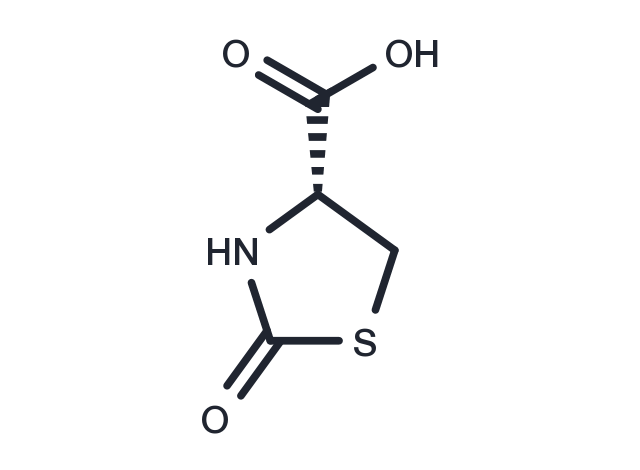Powder: -20°C for 3 years | In solvent: -80°C for 1 year
Oxothiazolidinecarboxylic acid (Procysteine) is a precursor to glutathione (GSH) which is an important antioxidant in plants, animals, and fungi.

| 説明 | Oxothiazolidinecarboxylic acid (Procysteine) is a precursor to glutathione (GSH) which is an important antioxidant in plants, animals, and fungi. |
| In vivo | Procysteine stimulated gene expression of anabolic factors such as insulin-like growth factor-1, ciliary neurotrophic factor, and cardiotrophin-1[2]. Procysteine supplementation eliminated the aging-associated differences in hepatic GSH and GSH/GSSG ratio. The nSMase activity and ceramide increased in the procysteine-fed mice irrespective of their age. The procysteine-fed aged mice also exhibited hepatic steatosis and triacylglyceride accumulation [3]. |
| 別名 | Oxothiazolidine carboxylate, Procysteine |
| 分子量 | 147.15 |
| 分子式 | C4H5NO3S |
| CAS No. | 19771-63-2 |
Powder: -20°C for 3 years | In solvent: -80°C for 1 year
DMSO: 55 mg/mL (373.77 mM)
You can also refer to dose conversion for different animals. 詳細
bottom
Please see Inhibitor Handling Instructions for more frequently ask questions. Topics include: how to prepare stock solutions, how to store products, and cautions on cell-based assays & animal experiments, etc.
Oxothiazolidinecarboxylic acid 19771-63-2 oxidation-reduction Antioxidant Oxothiazolidine carboxylate Procysteine inhibit Inhibitor inhibitor
